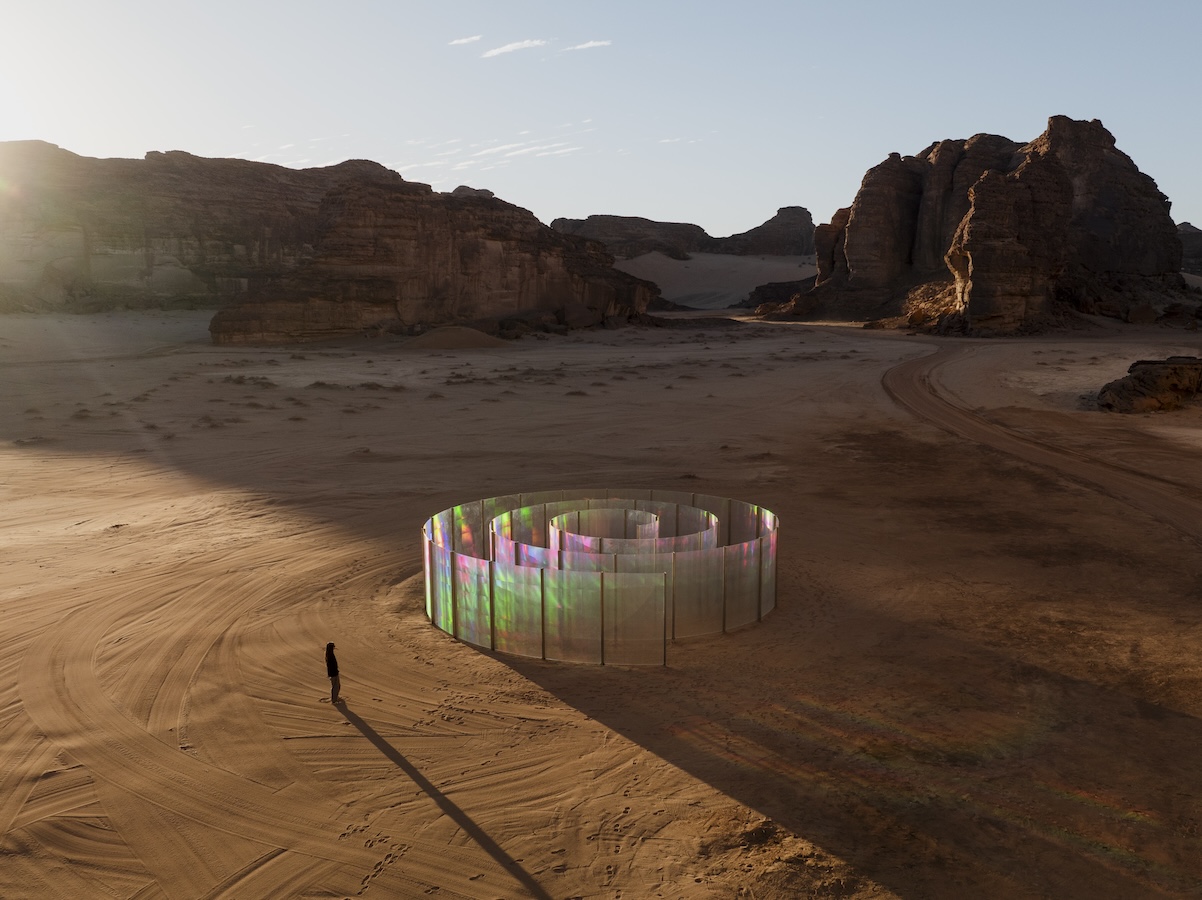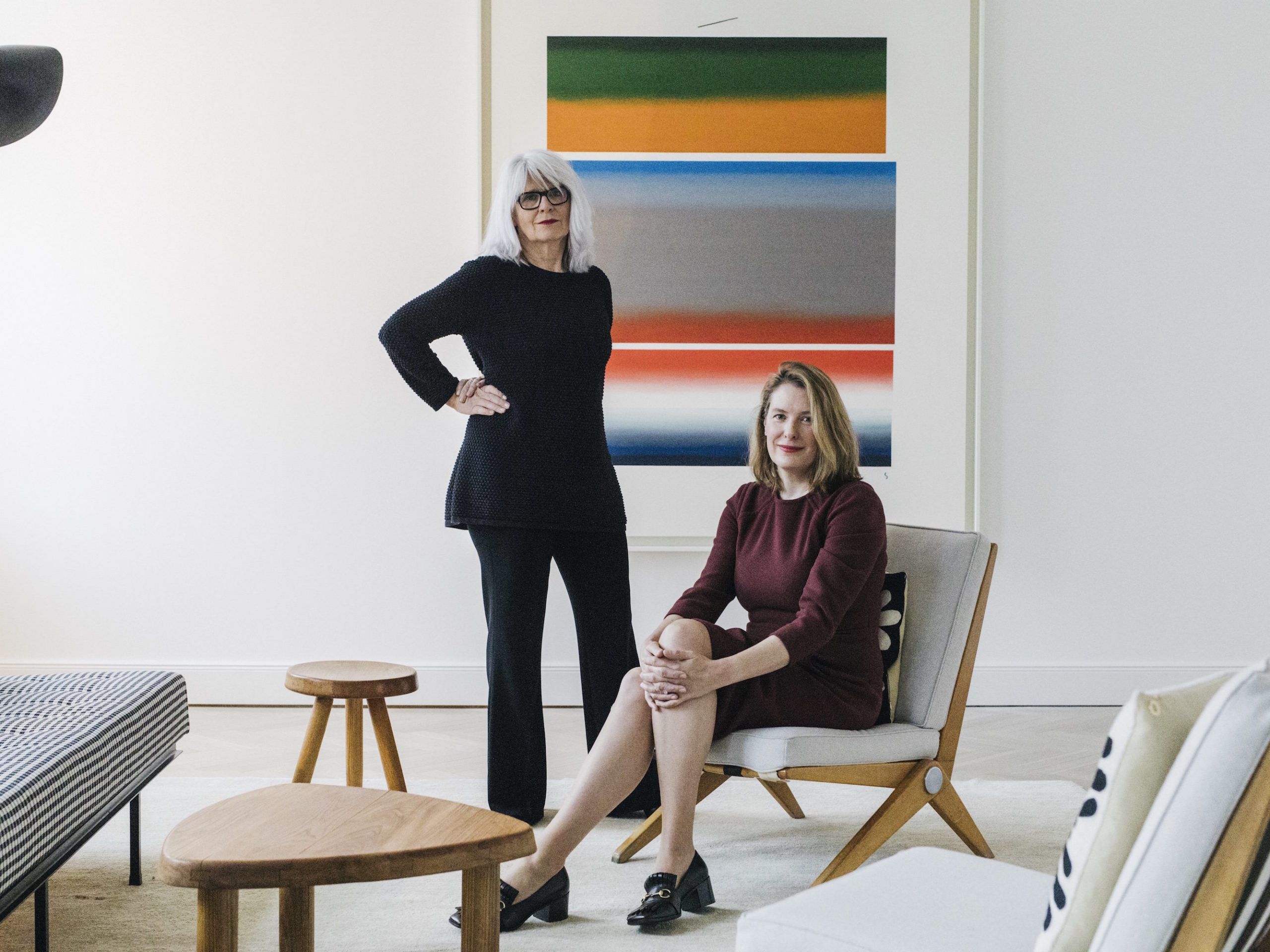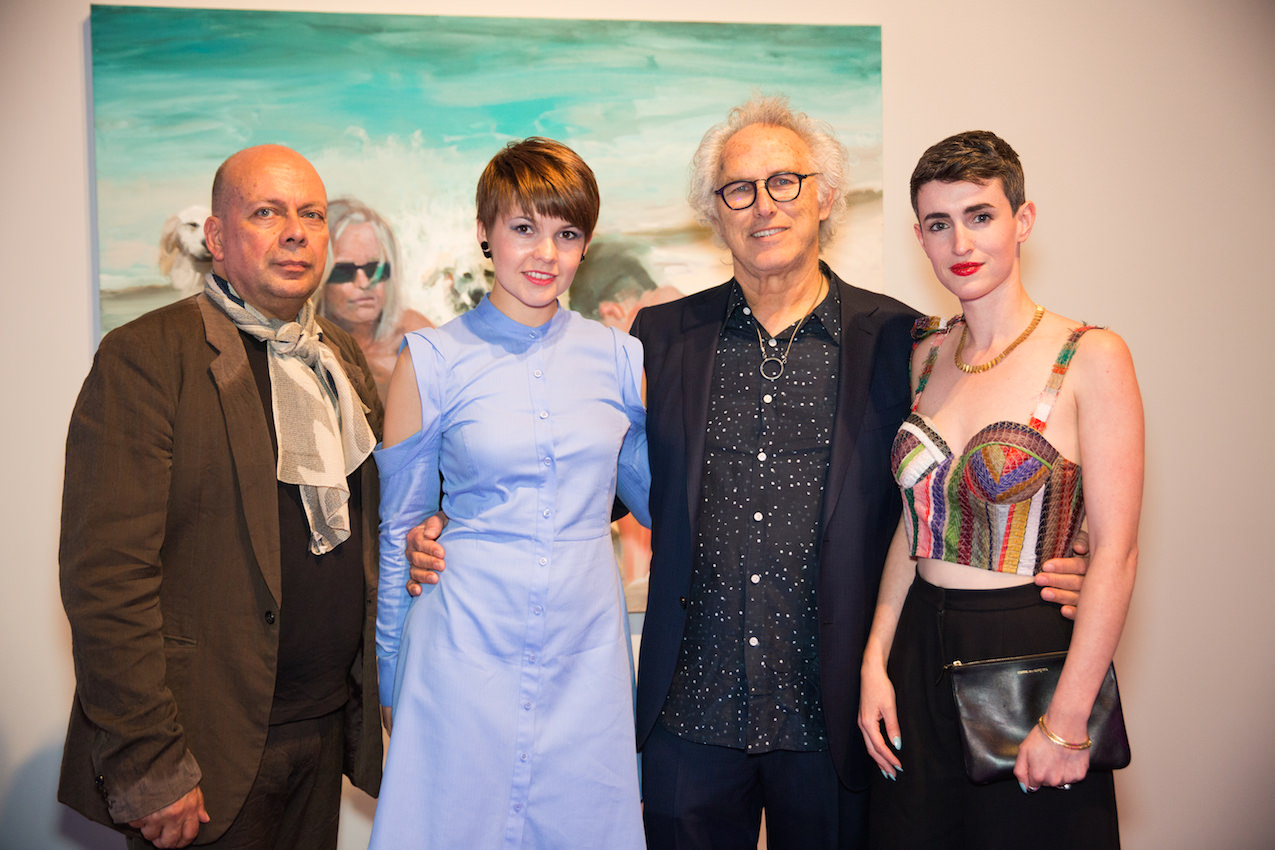“Desert X,” the Neville Wakefield-curated exhibition in Palm Springs and its surrounding Coachella Valley desert towns, has a number of interesting pieces to check out. One of the highlights of “Desert X” is Tavares Strachan’s I Am. Out by the equestrian center in Rancho Mirage, a resort town best known for being the home of former-President Gerald Ford and actress Lucille Ball, Strachan has dug hundreds of holes in the earth and filled them with tubes of neon light. From the ground at night, it feels a bit like the earth is illuminated from the inside, and cracks are starting to form. From high above, however, the two-football-field large piece reads, “I am.”
Strachan has a penchant for ginormous text art that envelop viewers in their meaning, but keeps it so simple that the words can be remembered, contemplated, and tucked away for later. The Bahamas-born, New York-based artist’s 100-foot-long, 22-foot-high neon word piece, “You belong here,” floated in the Mississippi River during the Prospect.3 biennial in New Orleans in 2014 did just that, and “I am” continues that exploration.
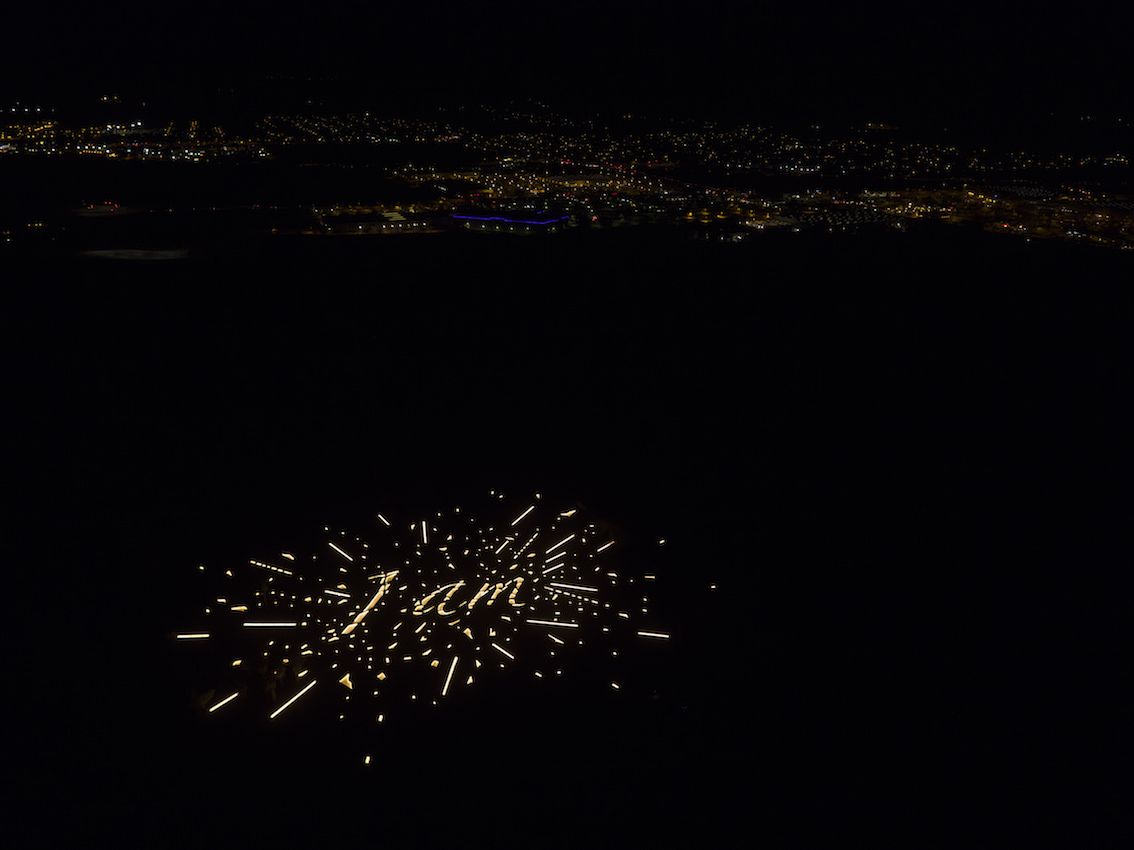
Photo by by David Blank
We spoke with Strachan over coffee at the King’s Highway restaurant in the Ace Hotel in Palm Springs the day of the piece’s unveiling.
WHITEWALL: So, tell me a little bit about your interest in the actual words “I am.” It’s a mantra, right?
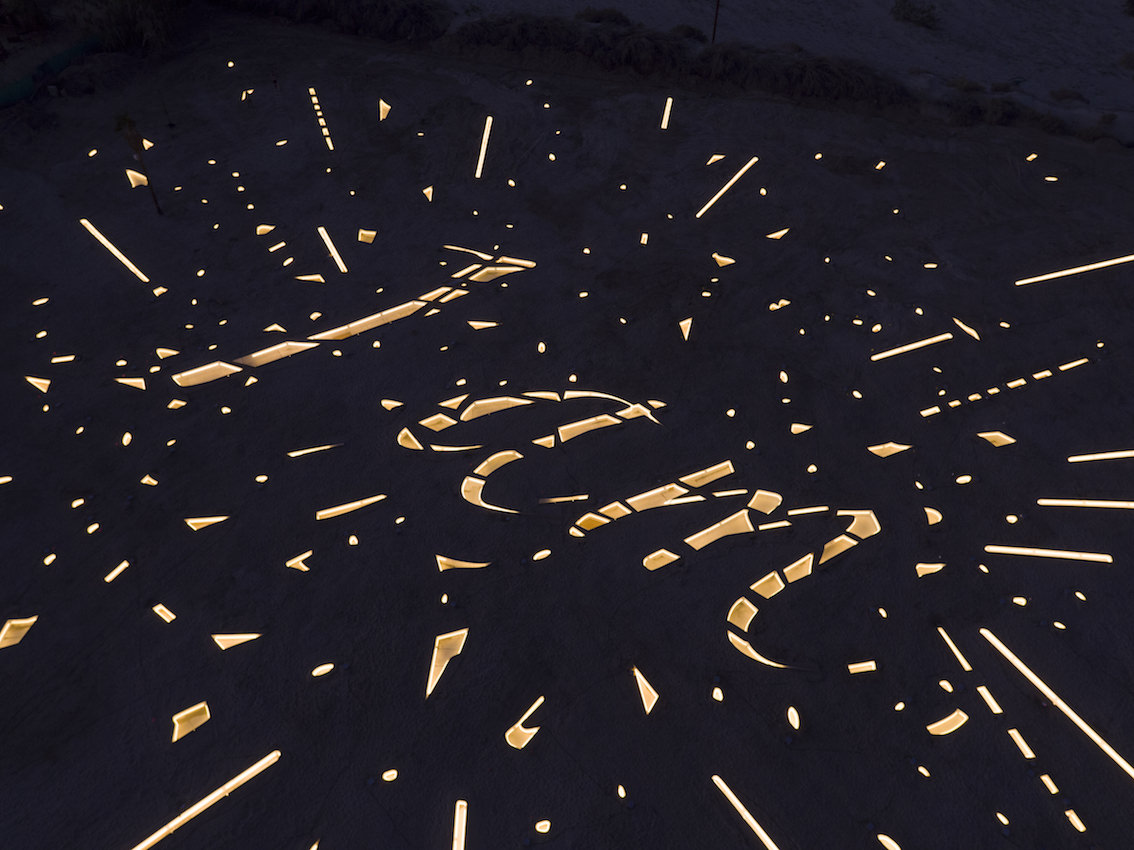
Photo by by David Blank
TAVARES STRACHAN: Yeah, it is. It’s old. It’s really old.
WW: It comes from Sanskrit soham, “I myself am the swan?”
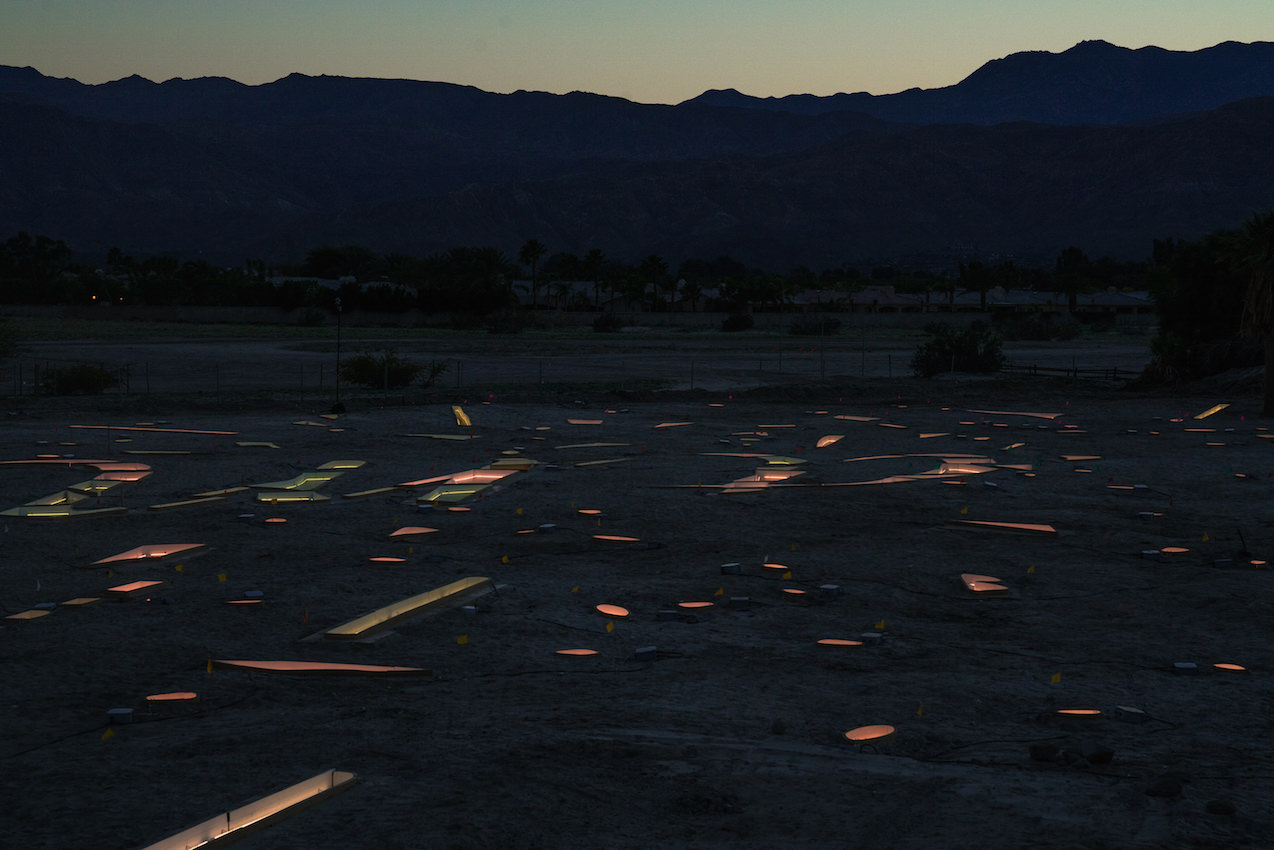
Photo by by David Blank
TS: Yeah, “I am that I am.” It’s funny. It’s so old that it’s been translated in a lot of different languages. So it’s Vedic Sanskrit, which is one of the oldest recorded languages of mankind. For me, it’s really just: There’s no you without the whole. There’s no individual without the group, and no group without the individual. It’s just playing around with an idea, and going within that, and trying to deconstruct it.
WW: So you’re trying to get viewers to think about themselves as part of a larger thing?
TS: I think so. How did it feel for you?
WW: When I saw it, I went with a group, so we all interacted with it in unison. We were all there walking through, and once you’re in there, you’re all together inside something. But what’s interesting is there was also this drone at the opening, projecting an aerial view of the work onto a screen. Otherwise, we couldn’t have seen the whole thing.
TS: I think one of the dichotomies of the work is that you can’t experience it and read it at the same time. You can’t have both experiences. You can only have one.
WW: You have worked with the idea of words in space. In New Orleans, the words were in a body of water, and here, they’re in the expanse of the desert. How do you approach the idea of “words in space?” Do you feel the need to fill these spaces with words?
TS: For me, the work is never the thing that you’re experiencing. John Baldessari has this quote where he says artworks are only good at pointing out ideas. So, all artworks are essentially a giant arrow pointing at something else. And I really like that idea. So, I think about the experience as the work, and not the “words in space” as the works themselves. I think about how the words in space lead to certain kinds of experience and moments of contemplation.
It’s also a little bit Situationist in that the idea is for someone to just walk upon them, and contemplate them as things that are a part of everything else, and not a separate thing. I think the space part of it has to do with that idea, and hopefully it’s not burdened by art.
WW: So the whole idea of the exhibition is about site-specificity, which leads from that. Is this piece specifically about the desert? Is it about this part of the desert?
TS: If you made a [pie chart] of the elements of importance, I would say that the desert keeps coming up to the top. Not necessarily this specific desert, but the idea of desert, and the physical nature of the desert—the wind and the sand—but also the history of the desert. Most of the ancient texts that I read as a kid—the Bible or Vedic texts—happened in the desert. So, it’s scene of all these moments of self-actualization. People being led through the desert, or people suffering through the desert, or people finding themselves. I really feel like the desert is a place to think about those ideas in.
WW: Your piece is very spatially motivated—we were talking before about how people move through your piece, and that there needs to be enough space for that to happen. Can you talk about the importance of space in it?
TS: I feel like space is very important to me, because I think, within space, there’s the opportunity to engage someone in the politics that I think are interesting about the world. Like, the politics of expectation, for example. What’s expected of who to do what? And I think space allows for disorientation and then reorientation.
When I say “space,” I mean architectural space, external space, internal space. I think space is super interesting. I think space, to me, is really undervalued as a kind of weapon to have to conversations, to add to conversations. If you think about the way that sand moves when you see it inside the piece, it gives you the sense that there are elements that are natural that you don’t get to control. You can try, but you can’t control them. And I think that’s fascinating.




